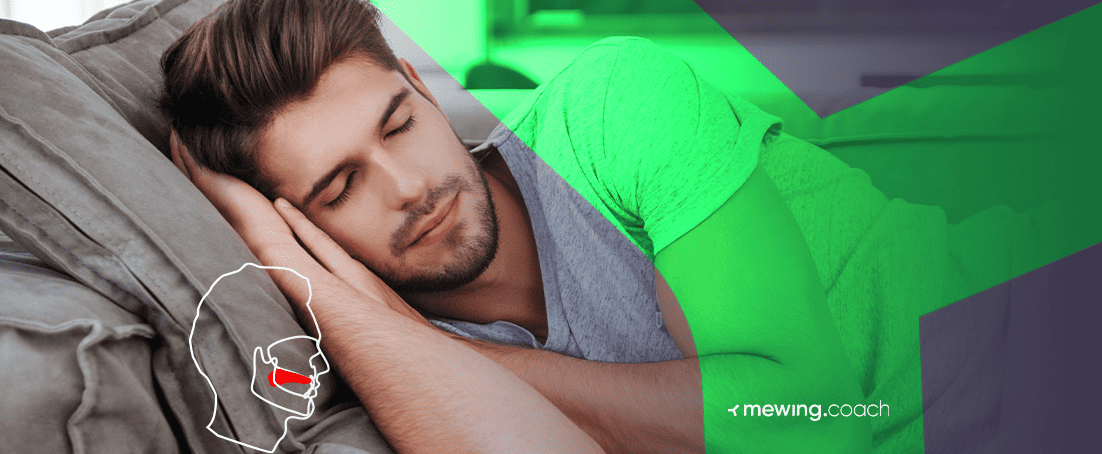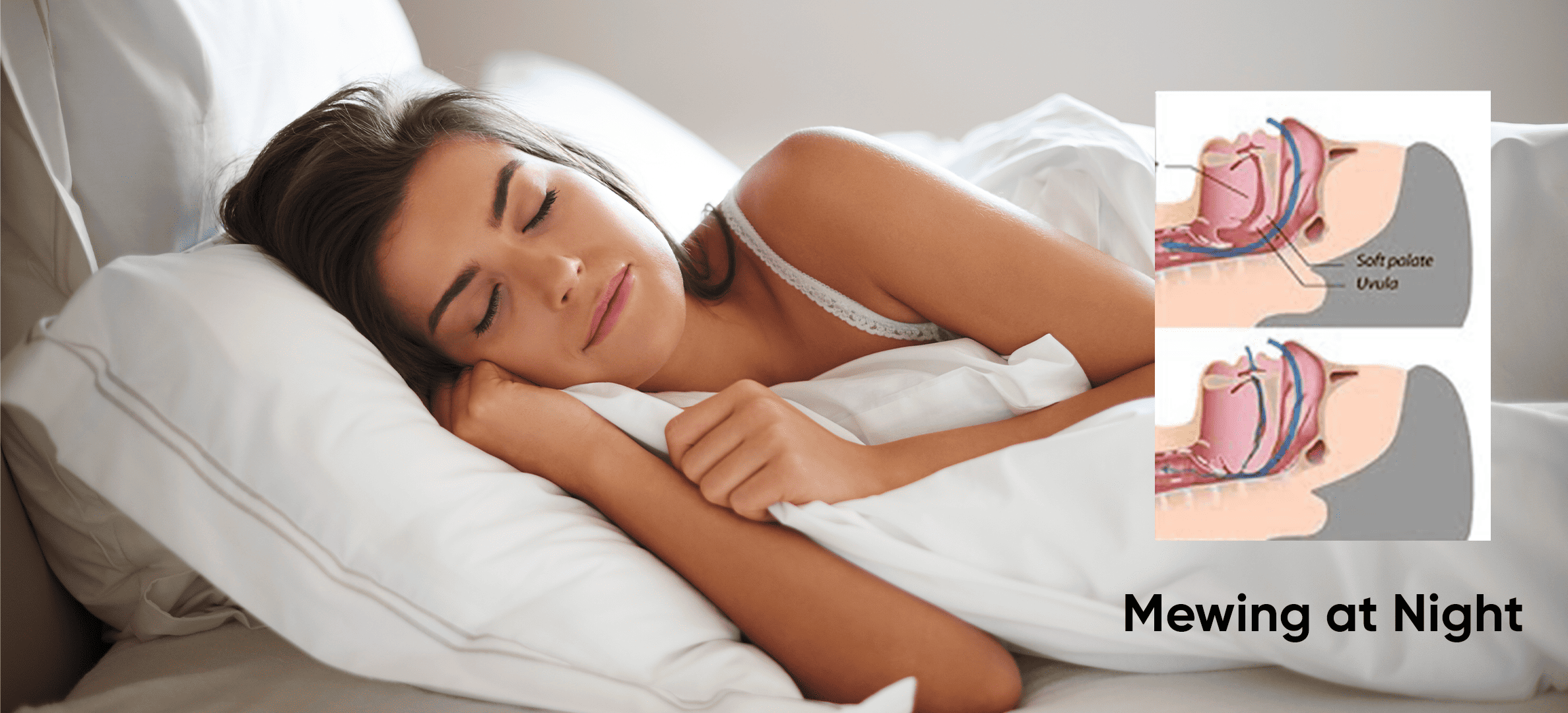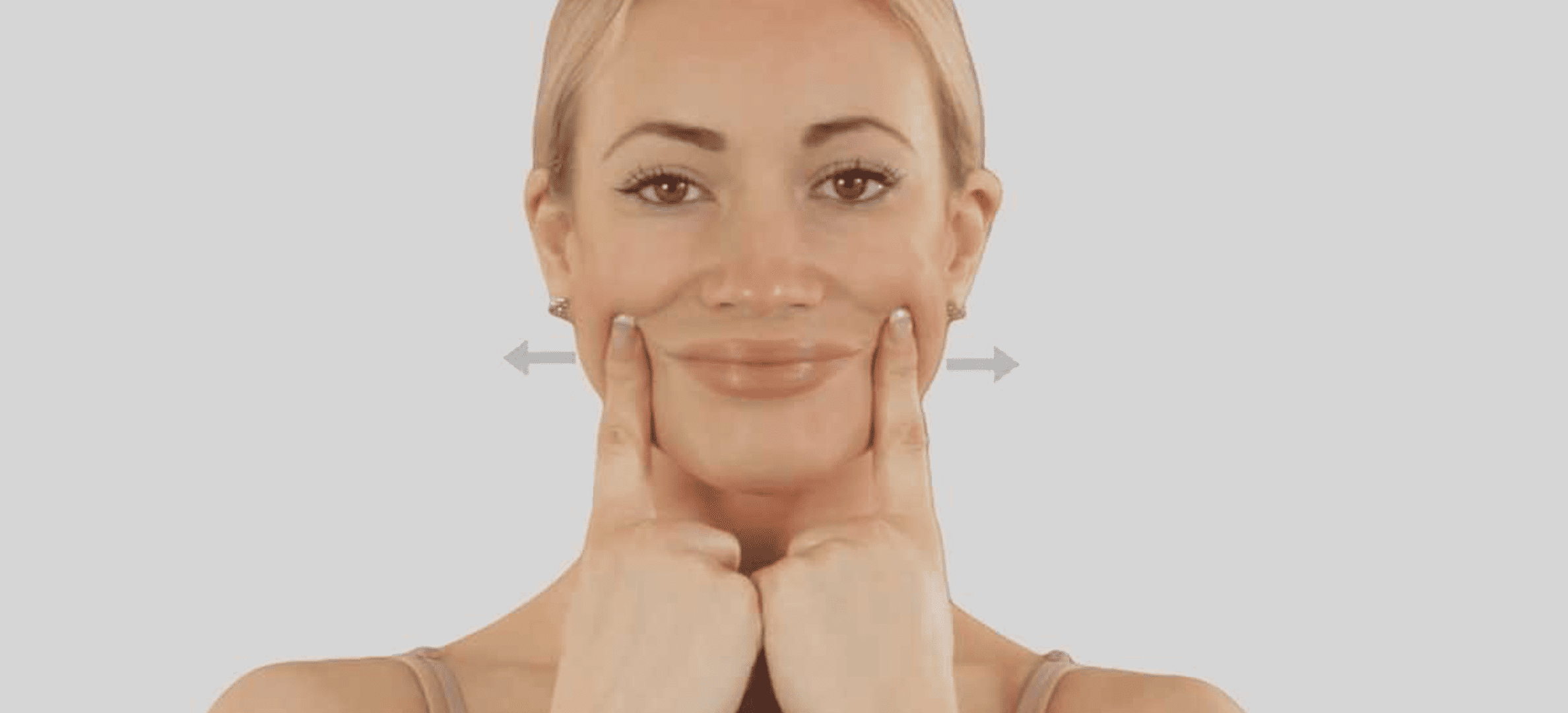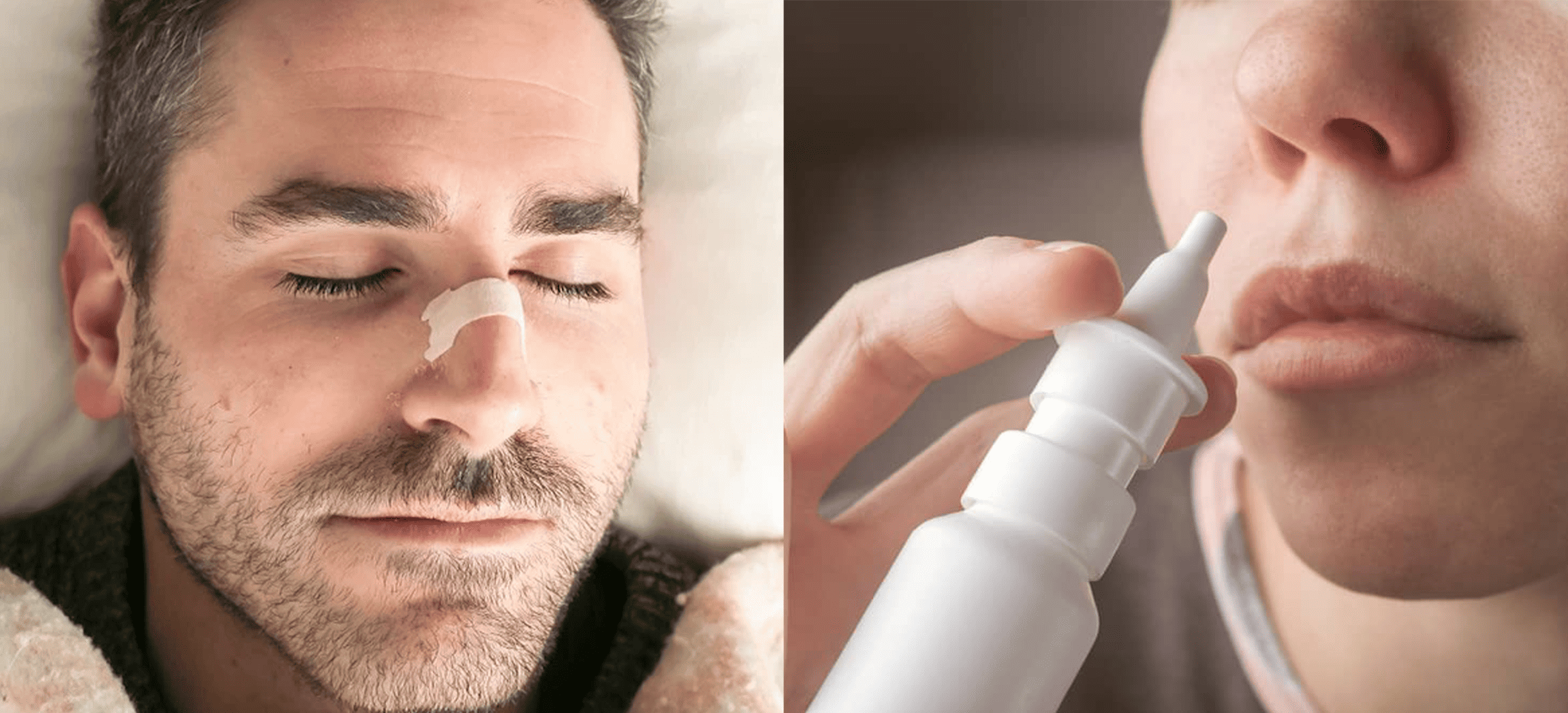
Have you heard of Mewing? Dr. John Mew, a British orthodontist, started researching the benefits of a good face and dental posture on his patients and children in the 1970s. He believed he had enough proof to present the idea of “orthotropic therapy” to his colleagues after seeing success with his patients, particularly with his middle child, Mike Mew.
Check this comprehensive article on mewing and learn more about the practice of proper tongue posture. Why? Because through change to one’s tongue placement against the roof of the mouth, you can improve the symmetry of your face, head, and strength in your jawline. It also reduces various other health conditions too.
And now the question comes, “Can you mew while you’re sleeping?” You sure can! In this article, we are going to see some useful tips that will help you mew even when sleeping. You’ll also read:
- 📑Why should you mew when you sleep?
- 📌Is mewing while sleeping a myth?
- 🩹Make yourself mew while you are unconscious!
- ✔️5 tips for mewing at night!
Sounds impossible? Read on.
Why Would You Want to Mew Even When You Sleep?
You can’t mew at night if you define mewing as nothing more than placing your tongue on the roof of your mouth. Having said that, if you have a good mewing routine, your resting tongue position should start to become better, even when you’re asleep.
Mewing lip positioning is the key to mewing when sleeping. When your lips are closed, your teeth and tongue posture improve, meaning they go where they’re supposed to. This can help with sleep apnea and even snoring.
Is Mewing While Sleeping Possible or is it a Myth?

When we sleep, we are not conscious, so purposely controlling the tongue, lips, or other facial muscles is not possible. Anyone who has ever begun mewing, has wondered how to determine whether they are mewing appropriately when asleep at night.
The main problem is that you can’t control your lips, tongue, etc. when you’re asleep since you’re unconscious. The importance of correct mewing tongue posture is always emphasized, but when sleeping, this becomes a problem.
However, mewing when sleeping is still possible even if you can’t control your tongue posture. How? It’s called soft mewing. It’s a type of mewing where your tongue has learned the resting position at the roof of your mouth, even when relaxed.
Make Yourself Mew While You are Unconscious!
It is advised that anyone attempting to mew spend 20 to 30 minutes per day, every day! This, however, is an exercise. Mewing itself should be practiced consistently throughout the day because you’re aiming to make an unconscious habit out of it.
There is a long list of mewing benefits that can help your overall health. As much as it sounds easy when we do it during the day, this can be a bit difficult to do at night. That is why constant practice can help you create a habit and thus achieve this goal.
The best way to stay consistent with your mewing process is to use our Mewing Coach app. Here, you can learn everything you need to know about mewing while you’re awake – from how to hold the teeth when mewing to even breathing while mewing.
Not only can mewing help you avoid invasive dental and maxillofacial surgery, but it’s also something that you can do anytime, anywhere, and all for free!
The Mewing Coach app will help you avoid mewing mistakes so that you get better tongue posture and improve your mouth breathing and nasal breathing. You may gradually see and feel the effects of 30 minutes a day of mewing while also developing an unconscious habit of the action.
5 Effective Tips For Mewing at Night While Sleeping

Before you start, first determine whether you are a mouth breather or you do nose breathing at night. How?
If you snore, then you probably sleep with your mouth open. There is also a strong possibility that your mouth is open when sleeping if you awaken with a sore throat and/or dry mouth. Another thing is if you notice that you frequently open your mouth during the day. In these cases, you probably do the same at night, meaning you mouth breathe.
So how do you keep your mouth closed? Let’s see several tips.
Focus on Your Lip Seal
This means that you should pay attention to whether your lips remain open naturally at night. To reduce the risk of mouth breathing while you sleep, try and focus on your lips before you fall asleep.
Stretch Your Lips

Sleep apnea and mewing can be connected, meaning that the mewing technique can help with your sleep apnea. The key, as we said, is your lips. Stretch your lip(s) by pulling them down and holding them in place for about 10 to 20 seconds so that you position them correctly while sleeping.
Strengthen your lips
Stretching is not enough – you need to strengthen your lips so that you can mew correctly during the night. Purse your lips, take a toothpick, and hold it in place for about a minute. This exercise can also help with nasal breathing.
Mouth Taping

This may sound weird, but one way to mew while sleeping is to seal your lips with mouth tape. Yes, you read that correctly. If your lips are naturally open as you sleep, taping and sealing your mouth shut is a wonderful technique to keep them closed and correct your tongue posture. Read our guide to uncover the best mouth tape on the market.
Use Nasal Strips or Sprays

Make sure you visit a doctor to check if you have problems breathing through your nose. This is essential to mewing and should be unobstructed. Snoring and mewing are also connected, as mewing can help improve your nasal breathing. Nasal sprays or strips offer a quick and simple treatment for mild nasal breathing problems. Read our guide to find the best nasal strips on the market.
Conclusion
Mewing is a great technique that can help you strengthen your jaw muscles, improve your breathing, and bring change to the overall face construction. By keeping your lips closed and practicing proper tongue posture, you can sleep better while still mewing.
We subsequently talked about the benefits and tips that can help you mew even when sleeping. Check the offered advice above and improve your health with a simple proper-tongue-posture technique.



